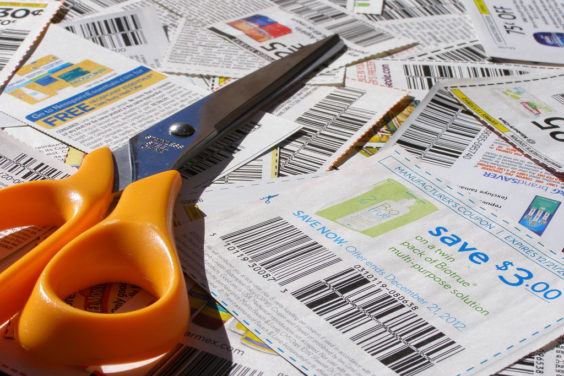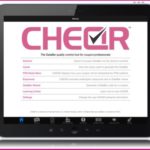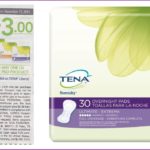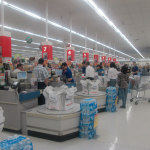
By this time next year, coupons will be a lot less cluttered, coupon fraud will be greatly reduced, and couponers will be able to sail through checkout without any issues.
Or, coupons will become impossibly complicated, older coupons with long or no expiration dates will instantly become invalid, coupons that say “redeemable at” a certain retailer will literally only be redeemable at that retailer, and checkout will be a nightmare, as perfectly good coupons are rejected for no good reason.
Which of those sets of circumstances is most likely to become reality, depends on whom you ask.
The Joint Industry Coupon Committee, an industry group representing both retailers and manufacturers, is calling for the retirement of the old UPC bar codes that have appeared on coupons for decades, in favor of a total transition to the newer, longer GS1 DataBar codes. The group is currently seeking industry comments on its plan, before its proposed implementation by June 30, 2015. After that time, the older UPC-coded coupons will become obsolete, and supermarket scanners and coupon issuers will be expected to use DataBars only.
The transition has been in the works for years, with the deadline to complete the change getting pushed back several times. Originally, all coupons were expected to use only the DataBar starting in January 2010. Instead, many manufacturers have stuck with hybrid coupons that use both the new and old types of bar codes.
There’s widespread support in the industry for finally completing the transition. Many major manufacturers like Procter & Gamble, Unilever and Kellogg have already fully converted to DataBar-only coupons, and only a scattered few smaller companies aren’t using the DataBar at all. So the comment period that ends next month, is not expected to derail the Joint Industry Coupon Committee’s plan.
Among coupon users, though, there’s long been some suspicion about the new bar codes, and whether they cause more troubles at the checkout than they solve.
But then, no one is asking couponers for their comments on the plan.
In theory, there are many benefits to the DataBar. The longer codes can contain much more information, such as non-standard values (like, say, “67 cents off”), up to three purchase requirements (“buy this and that, and get $1 off these”), and the maximum value of free-item coupons. The ability to code more complex offers reduces the need for a bypass code that allows the coupon to scan no matter what’s actually purchased. “This bypass code is familiar to the online coupon communities, and may result in intentional consumer misredemption,” the Association of Coupon Professionals’ new “GS1 DataBar for U.S. Distributed Coupons: A Practical Guide” warns.
There are other features of the DataBar that could be considered beneficial to retailers and manufacturers, but not necessarily to couponers. For instance, coupons can be coded to work only at a certain retailer. When a manufacturer’s coupon says “redeemable at Walmart”, for example, many couponers and retailers interpret that as a mere suggestion. But the DataBar is equipped to contain information that could only allow the coupon to be accepted by Walmart’s registers – turning the “suggestion” into a requirement.
And, thwarting some couponers’ ability to “decode” which coupons labelled “do not double” are actually coded that way, the DataBar can be coded to suppress doubling in a way that’s imperceptible to the human eye. Though, thankfully for couponers whose stores still double, the Association of Coupon Professionals’ guide discourages this as a widespread practice, calling it “a flag that should only be used for in-store distributed coupons and when requested by the retailer.”
Overall, the idea is that DataBar coupons are much less likely to require cashier intervention, because the scanner and the bar codes do all the work, checking that you bought all the required items, and giving you the proper discounts. “Reduced manual intervention at retail checkout,” the ACP guide says, means “less cashier intervention due to enhanced coding options.” That’s given rise to many stores’ new coupon policies that state “if it doesn’t scan, we can’t accept it” – because if it doesn’t scan, the thinking goes, the coupon is being used incorrectly, or may even be fraudulent.
In reality, though, the DataBars don’t always work as intended. Most retailers, the ACP allows, “have not yet completed all of the development necessary to take full advantage of the enhanced DataBar features.” Some use scanning software that takes shortcuts, and doesn’t actually read the full DataBar. That can result in coupons being accepted, or rejected, incorrectly. If a coupon “beeps”, the ACP says, “the checker will have to manually validate that the purchase requirements have been met and enter the value of the coupon discount in the register.”
But what happened to “if it doesn’t scan, we can’t accept it”? Therein lies the biggest potential problem, according to one DataBar critic.
“In order for this proposed policy change to work, then the coupon industry needs to acknowledge that the computer has become the final authority in determining whether purchase requirements have been met,” said Katherine Cary, founder of the “Clip Hunger” charitable movement and president of Dusty Wallet, Inc., the maker of the QSeer coupon app. “When a retailer implements a policy that a coupon is properly redeemed only if the computer says so, then the retailer is accepting the DataBar as the authority in proper coupon redemption,” she told Coupons in the News.
That would invert the current consensus, that the wording on a coupon supersedes how it’s coded. Just because a coupon “works” on a product it doesn’t specify it can be used on – say, using a Crest Whitestrips coupon to buy Crest toothpaste – doesn’t mean it should be used that way. But if the DataBar is encoded in such a way that cashiers don’t have to intervene, or even read the coupon, that might suggest that the coding now supersedes anything actually written on the coupon.
“The retailer wants to read the coupon, and hand it back to you if it doesn’t scan, regardless of what is written on the coupon,” said Carey, a former consumer products brand manager. “They don’t want any of their cashiers or managers to be able to override the computer’s decision!” Therefore, “any conflict between written words and digital encoding must be settled in favor of the digital encoding.”
Far from reducing misredemption, as the industry hopes, such a policy could create a minefield of widespread misredemption. It’s already happening, as the ACP notes, with online communities that promote intentional coupon misuse. So-called “glitch groups” keep track of which coupons will scan, even if the written purchase requirements are not met, taking advantage of what they call “glitches” in the coupons. While she doesn’t advocate such misuse, Carey argues that they’re technically not really “glitches” if the coupons are coded that way. So getting the coding correct is crucial.
The ACP guide contains a full four pages’ worth of “DataBar Common Issues”, and Carey says her own company’s research shows that many coupon DataBars are incorrectly coded, and will beep at the register even if used in accordance with the coupons’ wording. If retailers have such faith in the DataBar that they’re prepared to reject any coupon that doesn’t scan properly, Carey said, then they must be prepared to accept any coupon that does scan properly – regardless of the coupons’ wording. That may sound worrisome, but Carey said retailers and manufacturers can’t have it both ways. “Either you are redeeming a coupon in accordance with the DataBar or you are not. All gray area is eliminated.”
“The only people likely to be disappointed by efficient use of the new barcode system will be coupon counterfeiters and certain members of secret and closed Facebook ‘glitch’ and related groups,” counters Bud Miller of the Coupon Information Corporation. “Consumers, manufacturers, retailers and other industry participants will benefit directly and significantly from the appropriate use of these technologies by reducing fraud, increasing checkout efficiency, improving accuracy and enhancing consumer choices with new and innovative couponing opportunities,” he told Coupons in the News. “The CIC encourages all industry participants to appropriately implement these technologies as quickly as reasonably possible.”
The DataBar was designed as an improvement, after all. But if the old bar codes were far from perfect, the new bar codes are certainly far from infallible. It seems there’s a good reason the transition has been delayed so long. But not for much longer, if the industry has its way – for better or worse.











Pingback: Looks Like Tampa, FL Has a Coupon Fraud Disaster Happening | Budget Your Best